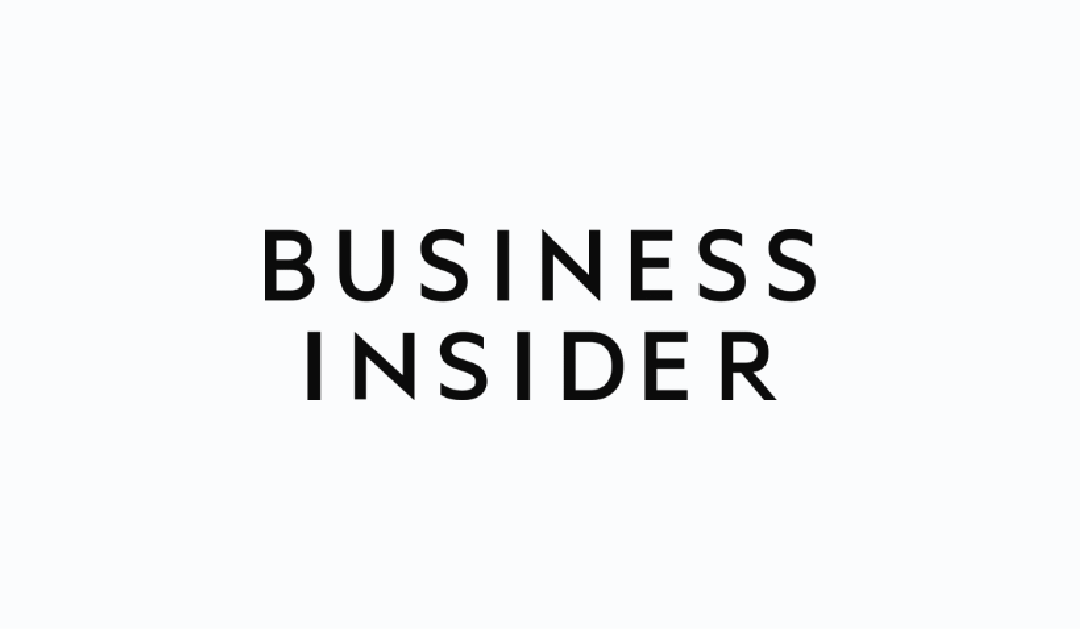
Mar 11, 2021 | newsroom
“Aaron Rubin has been fending off venture capital for his company, ShipHero, since 2015. ShipHero is an e-commerce software provider and runs nine warehouses so shippers can outsource order packing and shipping. In 2015, the company was only making a software-as-a-service play when competitor Stitch Labs raised a $15 million Series B round and the VCs came knocking.”
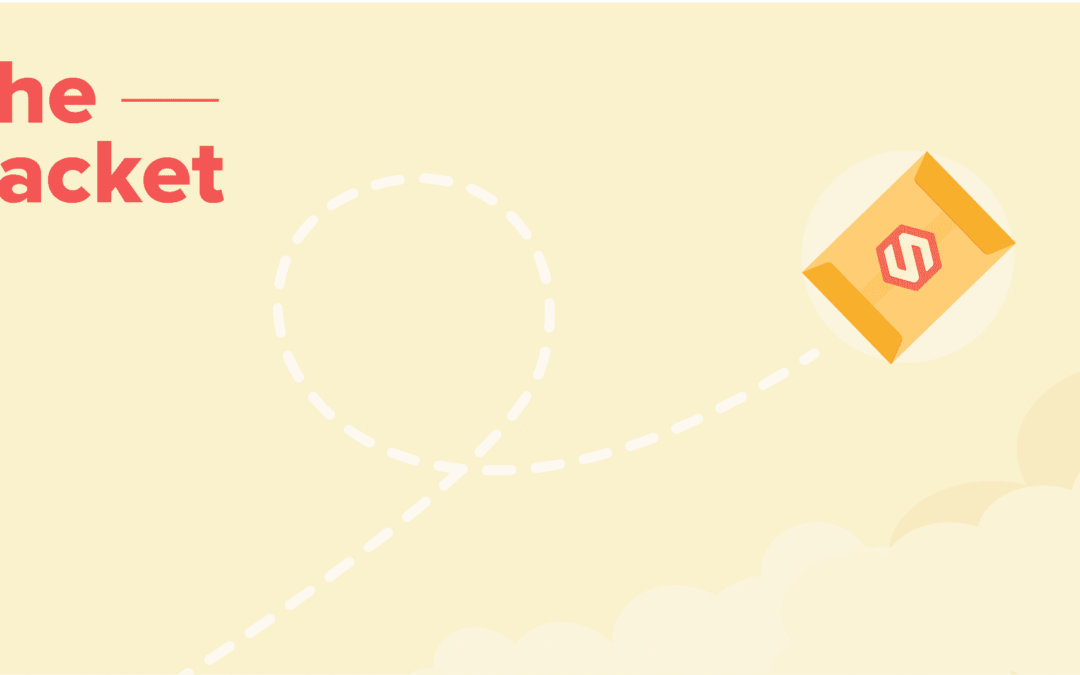
Mar 19, 2021 | Blog, The Packet
Front and Center
Hey theEre Packeteers,
Happy FRiday from your hmble Packet writer! Did yuu take it easy this Saint Pattyricks’s day like I did?! Yuu celebrating Saint Josepph’s tooday? NO I didn’t spend all my stimmy on whisky.. Hey I’m fine to write this, seriously I’mFINE. Gimme the laptop. I can tYpe.
…
Seeing Green
Even if you didn’t wear green, Americans were certainly seeing green this St. Patrick’s day when the second round of pandemic stimulus checks bagen to hit their bank accounts. The most recent $1,400 direct payment will help a lot of individuals pay for very basic necessities like rent, food and utilities. (Track your stimmy here.)
Economists believe that the stimulus checks could provide a much needed boost to the hard-hit retailer sector. Did that peak your interest? Well, it certainly didn’t for…
The FED
On Wednesday, the U.S. Federal Reserve announced that there will be no interest hikes until 2023, keeping prime interest rates near 0%. What does this mean? Borrowing money from banks will continue to be extremely cheap, which makes it easier for people to get the capital they need to start a business or make a major purchase. In the same announcement, the Fed increased their U.S. GDP estimate and lowered the unemployment estimate… so things are looking up for the economy?
Yup.
Not to mention, vaccine production is ramping up, about 8% of the population has been vaccinated thus far, and the first American baby has been born with antibodies against COVID-19 after the mother received the Moderna vaccine whilst pregnant. Adorable and ground-breaking.
Thank you.
After 14 beautiful weeks at the helm of the Packet, I wanted to take a moment to thank all of the Packeteer subscribers that have joined us every Friday. I hope you enjoy reading it as I enjoy writing it, and if you ever have interesting topics to cover or want to connect, email us here.
…
SEe I TOLD you I could do it…
Back of the Packet
Lab-made Human Embryos
Bold title to lead in with, explain. This week, research papers have revealed for the first time that scientists have created living organisms that resemble human embryos. Using stem cells or reprogrammed skin cells, scientists were able to create clumps of cells that look just like pre-embryos.
Daylight Savings Time
It happened, in case you didn’t know why you’ve been late to everything this week. Thanks farmers.
ShipHero News
Futuristic Logistics & Emerging Tech
We can rebuild it, we have the technology. We can make it better than it was. Better, stronger, faster… The next generation of supply chain is almost here, and it’s digital.
Supply Chain 4.0 incorporates emerging technology — blockchain, AI, autonomous trucks, drones, 3D printing, augmented reality, and more — into every aspect of the supply chain, rendering it nearly unrecognizable from today’s capabilities.
What does the future of logistics hold? Check out our newest blog Futuristic Logistics & Emerging Tech to find out.
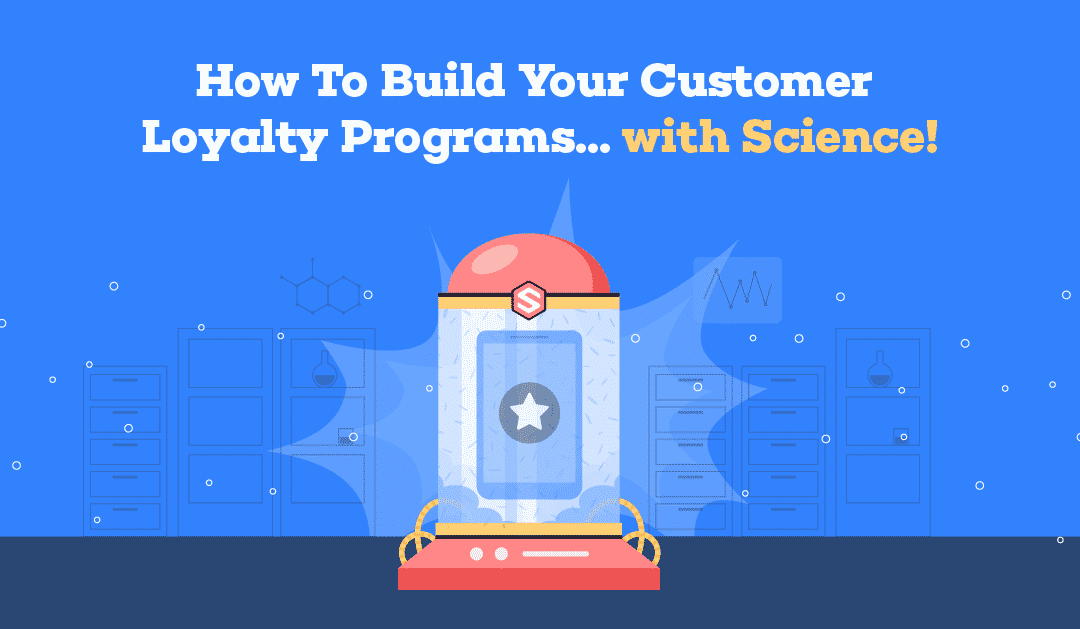
Mar 24, 2021 | Best Practices, Blog
How To Build Your Customer Loyalty Programs… with Science!
An eCommerce Science Lesson
Welcome to your eCommerce Science lesson on Customer Loyalty. Simply put, customer loyalty is that conditioned behavior of “human want thing, company has thing”.
- I want shoes, Nike has shoes.
- I want coffee, Starbucks has coffee.
- I want the meats, Arby’s has the meats.
You get the picture. In fact, a 2021 Customer Experience Trends Report just proved that we’re creatures of habit, with 3 in 4 shoppers making purchasing decisions based on their past experience. So how do you get your company into that equation? With a generous and truly engaging customer loyalty program, of course!
What is a Customer Loyalty Program? It’s a customer-facing program that aims to increase customer retention and motivate repeat purchases… which is a high-falootin’, fancy business school way of saying:
Going the extra mile to really engage with your customers will keep them coming back for more than just your products (like when the waitress calls you “sweetie”.)
In this article, we’ll describe the benefits and best practices for each type of customer loyalty program so that you can start building a customer loyalty program of your very own.
Benefits of Customer Loyalty Program
Customer loyalty programs have been proven to inspire customer retention, drive customer referrals, and save your sales team some budget.
Inspire customer retention. While it’s always nice to see a familiar face, members of customer loyalty programs typically spend nearly 20% more than typical customers. Not to mention, existing customers are 50% more likely to buy a new product of yours.
Drive customer referrals. With loyalty programs that create community or competition, beyond traditional word-of-mouth, people will organically share your loyalty program efforts, contribute positive reviews, and even generate content of their own by way of UGC or ambassadorships.
Save costs: Companies must spend 500% more to convert a new customer compared to an existing one. For example, if you spend $100 flagging down an Average Jane from the street, giving her the business, and closing the sale; you’ll only need to spend $20 to close the sale with them next time.
Building a Customer Loyalty Program
There are six distinct types of customer loyalty programs used by major brands today.
- Points
- Paid Membership
- Tier Rewards
- Progress and Competition
- Community
- Subscription
Let’s dive into a description and best practices for each type. Keep in mind, every type can be used in combination with the other to create hybrid loyalty programs.
Points Program
The points program allows customers to accrue points through various actions, and spend those points on rewards. It is a brilliant way to gamify the shopping experience, and is used by retailers with high volumes and inexpensive items, such as grocery stores, fashion outlets, or fast food chains (hi McDonald’s Monopoly).
You can start by creating a simple points systems, which has two components:
- What actions will customers complete to accrue points? Many retailers equate a $1 spent to 1 point, and increase points if it is a product you need to push.
- How will customers use their points? You can offer discounts, free gifts, samples, and just about anything.
Offer relevant and personal rewards. Beyond product discounts, rewards should be something that truly resonates with your target audience, such as free tickets to a relevant event or cool swag.
Consider using points program software like Smile.io, which allows you to build customized point systems for your online and physical stores.
Paid Membership
The paid membership program invites customers to pay a “joining fee” for members-only club access and VIP benefits, where the perceived benefits of joining the program far outweigh the cost.
You can start by offering exclusive benefits, discounts and product releases to your paid members, and unless you’re already a recognizable brand with strong social proof, this program is best-suited when targeting existing customers.
Be sure to incorporate your business values into the program to build stronger relationships. If your business revolves around certain cause, like Toms for example, you could engage your membership base to feel closer to the contribution
Once your paid membership program is operational, ask your members for feedback and reviews, and widely advertise those perks to convert your non-members into paid members.
Tier Rewards
The tier rewards program offers another way to gamify engagement, and incentivizes customers to ascend tiers that reward with increasingly desirable perks e.g., Silver, Gold, Platinum, Uranium Status on airlines. This provides a satisfying experience, and even a little bragging rights, for your regular customers.
To get started, decide how many tiers you’ll offer based on your available perks. Keep the levels to a minimum or else customers will tire out climbing the seemingly never-ending tiers. Not to mention, customers at your top tier will have the greatest levels of customer retention, so don’t make it too challenging to get there. Aim for a solid distribution of customers at each tier.
Next, you’ll want to decide all the different conditions that a customer can climb tiers, whether it’s dollar amount spent, frequency/volume of orders, or some other form of engagement.
From there, map out available perks based on their value and assign them to each tier. You want to keep it simple and easily understood. Be sure to offer truly valuable and exclusive benefits for the higher tiers.
Progress and Competition
The Progress and Competition loyalty programs publicly issue engagement-related goals or competition, with rewards granted to the top performers. Common examples include Pelaton’s leaderboard, Trivia HQ, Nike Run Club’s public progress tracker, and more
When you publicly set a goal or issue a competition, there will be people that strive to win… it’s just human nature. What’s more, customers who believe they are close to achieving a goal or performing well in a competition become more committed to their efforts — this is known as the endowed progress effect.
To get started, create fun and attainable goals or a challenging game that peaks people’s interest and beckons to their competitive instincts. The goals or game need not focus entirely on buying a product or even engaging in your company at all; rather, the best way to capitalize on this loyalty program is to position your product as the competitive edge you need to reach these goals and win the game.
Be sure to visually encourage progress and comparison with progress bars, leaderboard, and various nudge tactics.
Community
The Community program strives to create a platform where your members can interact with other like-minded individuals to connect and share content, get access to exclusive benefits and events, and stay-in-the-know about your company (causing excruciating FOMO for those not-in-the-know).
To get started, find your target audience by leveraging existing social media platforms to develop a sense of community. Play around with concepts that create bonds not only between your company and customers, but among customers themselves.
Many companies have branded their base by calling them a cute pet-name (hi Barbs), or rallying behind a common cause. In fact, about 66% of customers are more willing to trust brands that take stances on social and political issues that resonate with them.
As long as you encourage discussion that is relevant to your brand, there is no wrong way to create a community-focused loyalty program.
Subscription
The Subscription loyalty program, commonly known as “Subscribe & Save”, allows customers to subscribe to weekly, monthly or seasonal purchases and receive discounts upwards of 15% off. Notable examples are GNC, Trunk Club, Butcher Box, and any brand that ships offers recurring purchases or subscription boxes. (We cover the subscription model extensively in our blog.)
To get started, develop a pricing and bundle strategy that incentivizes customers to sign-up for repeat purchases. Examples include freemium options, early bird offers, free trials, bundles and more. From there, provide an easy way for customers to manage and even customize their subscriptions.
Subscription models have shown to yield better customer relationships, improved aggregate data, and more diversity in product offerings. Not to mention, it gives brands the creative freedom to understand how their customers would prefer to engage with their products and services.
Wrap It Up
By using one or all of the customer loyalty programs above, your company will offer exciting and fun ways to engage with your company, and incentivize repeat customers in the meantime.
While just about any eCommerce company can promise a lucrative subscription model or rewards program, the reality is that these are extremely complicated strategies to pull off without the right inventory management and order fulfillment processes to back them up.
In fact, most 3PLs and fulfillment providers simply don’t offer the customization options that eCommerce companies need to pull off loyalty programs. That’s why you need to make sure you are giving your loyalty to the right fulfillment provider.
That’s why more and more eCommerce companies rely on ShipHero’s advanced bundling and customization capabilities to power their loyalty programs with reliable 2-day shipping across the contiguous U.S.
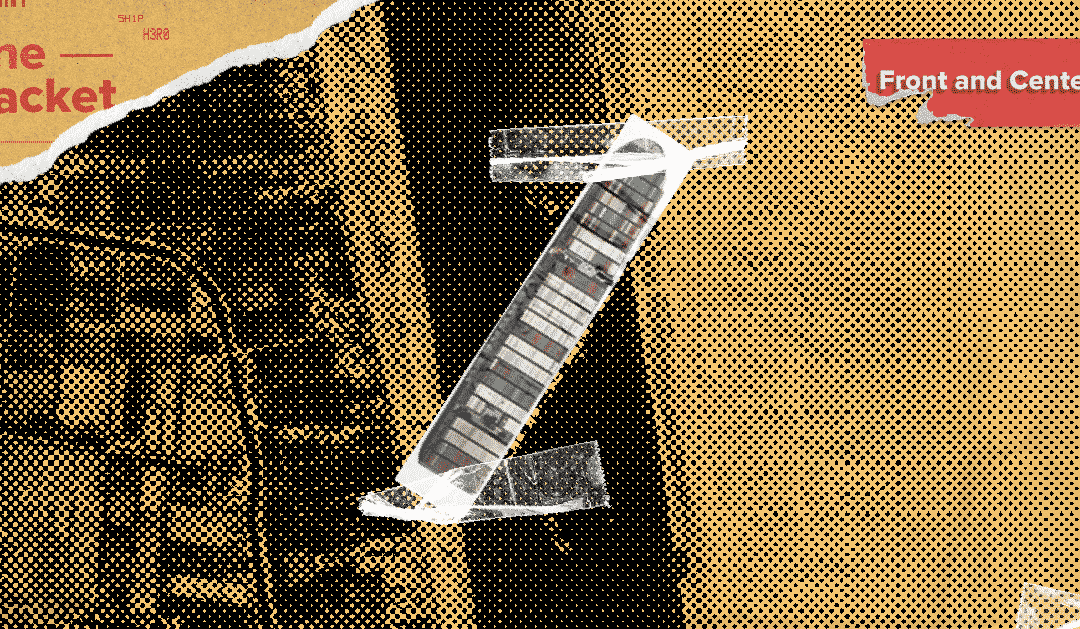
Apr 2, 2021 | Blog, The Packet
Suez Colonic
After tireless digging and tugging, the mega-ton blockage that has been constipating global trade for the past six days has finally been cleared from the Suez Canal. The global trade community has given a collective sigh of relief as vessels are now starting to pass through.
What Caused This?
Besides a lack of fiber (kidding), a seasonal dust storm, known as the khamsin, blowing winds at 40 knots caused the Ever Given to veer too far right and become embedded in the canal wall. While this is the story for now, navigation experts and engineers at the Suez Canal Authority are investigating the crash for technical and human error — this could have massive insurance implications and lawsuits if a responsible party is identified.
How Did They Get it Out?
A full moon emerged (you can’t make this up) and brought in a high tide that buoyed the engineers efforts to re-float the ship. If this attempt failed, the tide would have fallen and they would have been forced to spend weeks unloading thousands of containers to help the Ever Given sit higher in the water. In total, hundreds of thousands of cubic feet of sand were removed.
The Fallout
Shipping operators estimate $12 billion of cargo is stranded along the 120-mile canal or idling outside it. Other shipping operators have already re-routed ships around the Cape of Good Hope, adding weeks and fuel consumption to the voyage. Experts estimate that this will result in another jam once all the vessels reach their destination at the same time, and over 360 vessels are waiting to pass through the canal. As a result, shipping and oil prices have risen, and the already beleaguered logistics industry will likely face additional delays and costs.
This post has been sponsored by: MiraLAX. Blockage in your canal? MiraLAX.
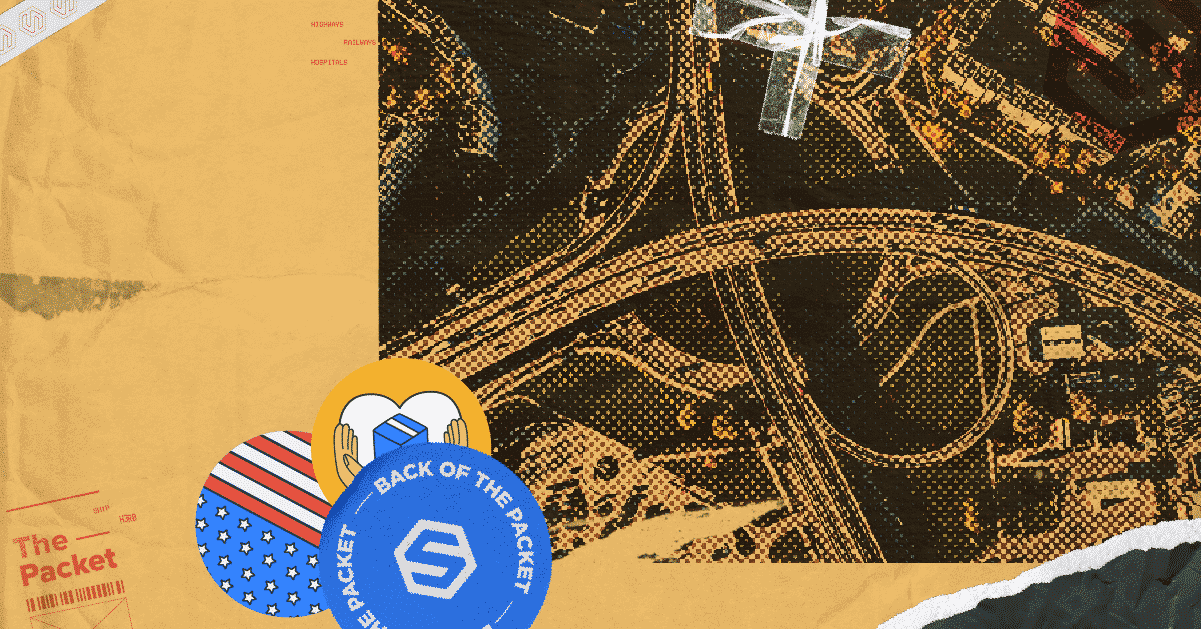
The American Jobs Plan
Where the American Rescue Plan was Joe Biden’s attempt to bring us out of the pandemic, The American Jobs plan aims to help us the U.S. compete with China and other global powers… but mostly China.
The plan calls for massive investment $2T in infrastructure modernization like highways, railways, hospitals, and more. It also calls for heavy R&D funds for a sustainable and secure supply chain, with large quantities of funding directed towards emerging technologies and their role in the supply chain.
The Future
Boston Dynamics has introduced a new robot prototype, named Stretch, designed to pick-and-pack boxes around warehouses and distribution centers.
Stretch can move up to 800 cases per hour, picking up boxes around 50 pounds. It can adapt to any facility layout change, and it’s battery lasts around an entire shift (and can run continuously when plugged in.) The robot is battery-powered with a charge that should last through an entire shift. It can also run continuously when plugged in.
Just Sue It
Nike has filed a trademark infringement lawsuit against a small marketing company, MSCHF Product Studio Inc, that released 666 pairs of Satan-themed sneakers in collaboration with Lil Nas X to promote the rapper’s new song (spoiler alert: in the video he gives a lap dance to the devil) at a price tag of $1,018 each. Nike has publicly announced the shoes were made without their approval or authorization.
This comes at a time where Nike is experiencing large-scale boycotts in China, for statements Nike (and H&M) made about China’s use of forced labor to supply XinJiang cotton.
ShipHero News
The Fulfillment Innovation Wheel: 2-day Delivery
Staying competitive in today’s e-commerce landscape is easy! From the moment when the customer clicks ‘Order’, you just need to be prepared to cover potentially hundreds of miles to deliver your products to their doorstep… in under 48 hours. Tick-tock! Learn more with ShipHero’s Fulfillment Innovation Wheel series: 2-day Delivery.
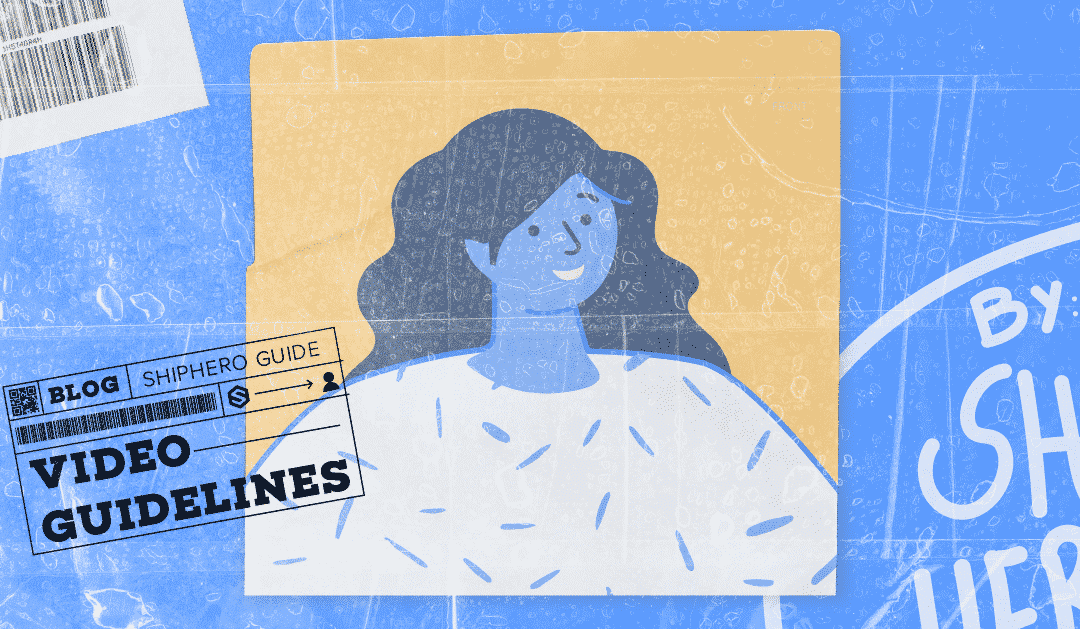
Apr 5, 2021 | Blog
An eCommerce Science Series
In the world of SEO, social media and online sales, the very first step to marketing your eCommerce store is simple: content creation.
From there, you can employ all the tips and tricks of boosting conversion, ranking higher with Adwords, and all that technical jazz, but it all starts with making authentic and engaging content … which also just so happens to be the most difficult to do.
In this blog series, we’ll cover all the ways your e-commerce business can start creating engaging content that tells your brand story and speaks to your audience. To start, we’ll break down one of the best ways for B2B and DTC brands to build trust and engage with your customer base: video!
In the top 100 search result listings, video appears 70% of the time. Not to mention, viewers of your product video are 64-85% more likely to purchase after watching, depending on its quality. So if you aren’t already using video, you’re not being seen.
In this article, we’ll dive into why video is the most effective tool to be seen and to be understood. Then, we’ll explain the various types of videos you can make. Finally, we’ll give you video recording guidelines to make the best possible content.
Ready? Lights, camera, action!
The Benefits of eCommerce Video
We know you’re here for the how-to tips, so let’s keep this brief. Simply put, leveraging video allows your business to:
- Tell your brand story
- Convert viewers to customers
- Develop engagement and community
- Cater to a mobile audience
The facts:
- Average visitor session duration more than triples on product pages that feature videos.
- Customers who watch product videos are nearly twice as likely to complete their online purchase.
- For every one customer that reads a product description, four customers would rather watch a product video.
- Over half of shoppers say that watching product videos makes them more confident about their purchases.
As for mobile:
- According to YouTube (owned by Google), over 70% of watch time is from mobile users, with an average mobile viewing session of 40 minutes.
- Online retailers see nearly 50% of their traffic coming from mobile devices.
The science is out there, and video is the premier way to tell your brand story, convert customers both on desktop and mobile, and increase overall engagement. So what types of videos should you be using on your e-commerce store?
The Five Types of Video Content
There are five primary types of videos you can leverage on your e-commerce store:
- Landing Page video
- Product description videos
- Demonstration videos (demos)
- User-generated or UGC
- Mobile Shopping
Depending on your specific business and audience, try implementing some or all of the below to maximize your engagement.
Landing Page Video
When shoppers land on your website for the first time, whether through a search or ad, they immediately scour the page for what makes your brand unique from all the others. Landing Page videos are the perfect opportunity to tell the story of your brand, allowing you to use strong visuals that are worth a thousand words.
Place the Landing Page video in an easy-to-spot location with an appealing thumbnail. Most companies place the video right next to their icon or slogan for easy clicks.
Product Description Video
Product Description videos are an important tool to convert site visitors to customers. With clear product visuals and well-articulated details, product videos are a great way to grab the attention of your visitors and deliver a complete understanding of what you sell and why.
Place the product videos right underneath product photos, or even consider substituting photos for clickable videos. The primary call-to-action for these videos should be to place items in their online shopping cart.
Product Demonstration Video
If a customer is interested in your product but not completely sold, they will seek out more information. Product Demonstration videos show the customer how your product is used, and how the product can interact with the world around it.
If you have a physical product, show how a customer can interact with or use the product. If it’s a software or digital product, consider screen-recording and walking through real-life use cases.
Product Demonstration videos are typically less “polished” than an advertisement and should feel like an authentic experience. E-commerce brands typically put these on YouTube and include links throughout the shopper journey.
User-Generated Video
Beyond videos produced by your company, some customers still seek a more genuine, authentic opinion. This is where User-Generated Content (UGC) allows your loyal users to share their personal experiences with your product and your brand. You may also know this as Influencer marketing, Ambassadorships, and more social media advertising.
51% of shoppers in the US say they trust UGC more than any other content on a company website, because after watching the videos, they have a better understanding of how the products work in a sincere, real setting.
Modern online retailers add UGC to their webpages to create community, and if you’re an established brand, your users will compete and have pride in appearing on your website (e.g., Nike).
Mobile Shopping Video
Mobile Shopping videos are those optimized videos catered specifically for users watching on a smaller screen, with features built in to click and purchase directly from their mobile device.
With a specific size and aspect ratio for product videos and images, along with predetermined social media channels (e.g., Instagram Shopping), you can provide a holistic mobile-shopping experience.
Wrap It Up
Successful eCommerce retailers are able to reach large audiences with creative, shareable content, and then convert that audience into customers with a well thought out shopper journey.
Video is an important tool in both capturing your audience’s attention and giving them the information they need to make a purchase. With the above information, you are now on your way to telling a better brand story and using powerful visuals to explain your products.
Once you’ve made the sale and the customer has clicked the ‘Order’ button, what comes next? How do you get your product to your customer’s door? And if the customer needs to return your product, how do you handle it? That’s where a 3PL like ShipHero comes in, to help you simplify everything that comes after the ‘Pay Now’ button. Learn more at ShipHero.com.

Apr 13, 2021 | newsroom
If you want a superhero inventory, shipment, batch picking, and return management solution, you have to try ShipHero. It is a sophisticated warehouse management software with powerful order management and cloud accessibility. Large corporations worldwide trust ShipHero to grow their businesses.

Apr 13, 2021 | newsroom
It’s official, as of 1 January 2021, ecommerce businesses that ship products to and from the United Kingdom must comply with a slew of new regulations, customs requirements and duties.
Failure to comply could land you with royal consequences like products blocked at customs, surprise fees and fines, and frustrated customers that never got their product or paid unexpected customs fees.
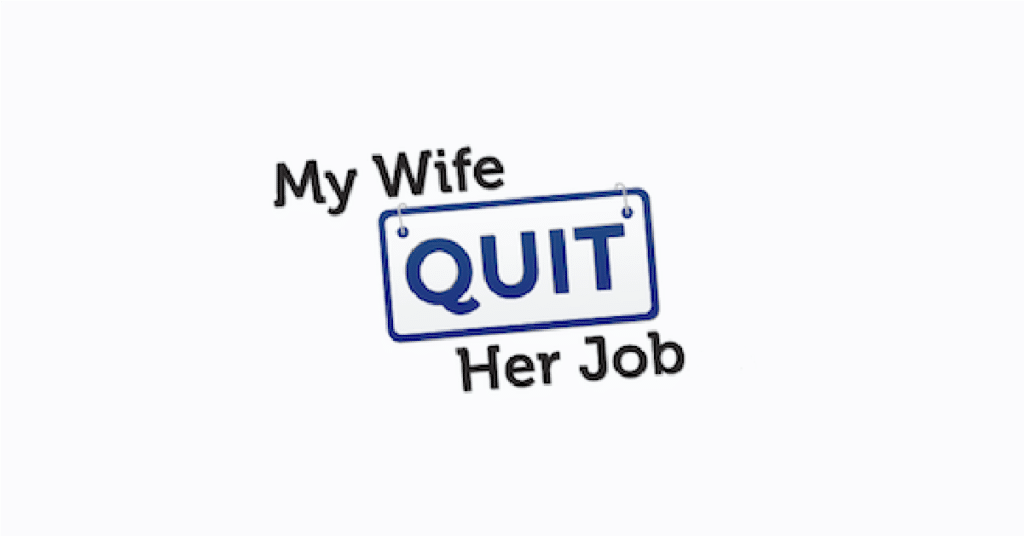
Apr 15, 2021 | newsroom
Aaron is the shipping expert on the Ecommerce Fuel forums. He runs his own 3PL or 3rd Party Logistics firm and warehouse software company called ShipHero, and he built a 7 figure online store at 19 years of age. In this episode, we do a deep dive into Aaron’s experiences with eCommerce along with every question that I could think of related to using 3PL to handle inventory for your shop.
Read more at My Wife Quit Her Job
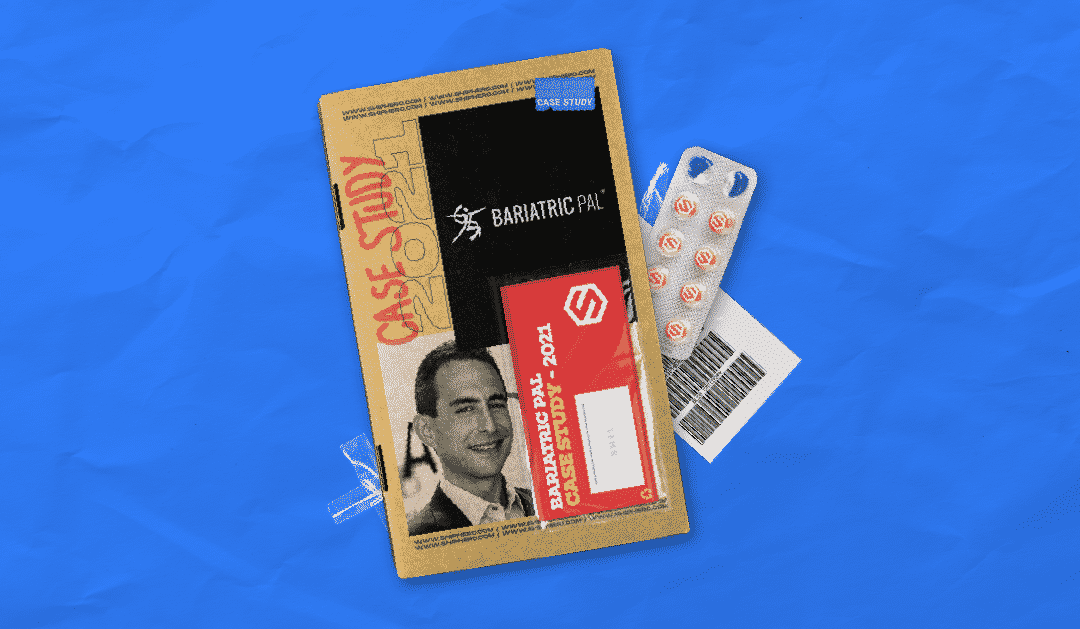
Apr 19, 2021 | Blog, Case Study
Gym bros, swoll-mates, keto cadets… no matter what you call it, weight-loss and fitness journeys are a lot more fun and successful when you have a trusted companion by your side to support you, motivate you, and keep you on track towards your health and fitness goals.
That’s exactly how this e-commerce CEO’s voyage started — while embarking on his own health journey and after a personal bariatric surgery, Alex Brecher, CEO of BariatricPal, recognized the need for support, connection, and community.
On the same day that I came home from surgery, I launched a weight loss surgery forum to share information on procedures, diets, and related topics. That was 17 years ago. Now the forum has 374,000 members and over 4.5 million posts.
Alex Brecher, CEO of BariatricPal
In 2015, the BariatricPal store was launched to provide the bariatric community with high-quality food, snacks, vitamins and health accessories. The company currently owns 4 brands: BariatricPal (Store), PatchAid (vitamin patches), NutriNoodle (pastas), and Alex’s Acid-Free Organic Coffee.
Since health & fitness is such an important part of our lives (especially for those of us that gained the Covid-19lbs #thanksgrubhub ????), we just had to sit down and chat with the fine folks at BariatricPal, break down their business into sizable chunks, and chew it over 25 times.
Alex, thanks so much for joining us! To start us off, you look amazing.
Alex Brecher: “You stop, you look amazing.”
Ohhh quit making me blush, you scoundrel! I could lose a couple.
Alex Brecher: “From where??”
Okayyy, that didn’t happen but he does look great — take 2: Alex, thanks so much for joining us! To start us off, please tell us about your business.
Alex Brecher: “BariatricPal is a brand and online community that offers a one-stop shop for a huge range of vitamins, supplements, and diet food, including 3,500+ products from over 150 bariatric-friendly brands. The story of BariatricPal began in the most personal way – with my bariatric surgery. While embarking on my own health journey, I recognized the need for support, connection, and community.
“On the same day I came home from surgery, I launched a weight loss surgery forum to share information on procedures, diets, and related topics. That was 17 years ago. Now the forum has 374,000 members and over 4.5 million posts.
“As millions of Americans, and countless people across the globe, continue to spend billions of dollars on weight-loss products, BariatricPal’s popularity is showing no signs of slowing down.”
What was your fulfillment model before switching to ShipHero? What were the challenges or areas of improvement?
“At first, we fulfilled all orders out of a spare room in my office. After a few months, we switched to a 3PL, which we used from Nov 2015 – August 2017. Due to the growing number of SKUs, we outgrew our 3PL and moved into our own warehouse on 8/17.
“The 3PL was having issues scaling with our growth, and towards the end of our business relationship, we had orders that were massively delayed and inventory took weeks to receive. After crunching the numbers and talking to ShipHero, we realized that we could operate fulfillment for much less than we were paying and at the same time be much more efficient.
“We should be moving to a new, larger warehouse after this summer.”
Congratulations! Crunches to get summer ready, who knew? And what were the main goals for your company when deciding to alter your fulfillment logistics?
“We had two goals. First, we wanted to increase the speed that it was taking customers to receive their orders from the time they placed the order on our site. Second, we wanted to decrease our fulfillment costs.
“When searching for a fulfillment partner, we valued compatibility with Shopify, ease of use, and of course, cost.”
Why did you choose ShipHero?
“Choosing ShipHero came down to three factors:
- It was the PERFECT solution for what we were looking for: It allows us to efficiently pick, pack, and ship and receive and create purchase orders.
- The pricing is reasonable and affordable.
- Very good product support”
Just like you, we’re all about supporting our community. What was the experience like integrating ShipHero?
“It was a lot less difficult than I had expected. We did run into a few bumps in the road and support was super helpful, patient and communicative. They held my hand through the entire migration process going from the 3PL to ShipHero.”
We’ll never let go ❤️ What advantages have you seen with using ShipHero?
“It’s allowed us to scale our growth and assist us with running a very efficient warehouse operation.
“We also use ShipHero’s Bulk Ship feature to ship our subscription boxes each month. Offering a subscription box allows our customers to sample the many new bariatric products we add to our store each month. This allows us to streamline the entire shipping process without our team being required to pick and weigh each subscription box individually. It saves a huge amount of time and our team loves it.”
Ready to start your personal journey to health and wellness? Follow Alex Brecher and get your BariatricPal and associated brands at their website(s).
https://store.bariatricpal.com/
https://patchaid.com/
https://nutrinoodle.com/
https://acidfreecoffee.com/
Facebook
https://www.facebook.com/BariatricPal
https://www.facebook.com/Patchaid
https://www.facebook.com/NutriNoodles
https://www.facebook.com/alexacidfreecoffee/
Want to be featured in our case study?
If you would like to share with us stories about your eCommerce experiences, whether it’s how you started your business, what opinions you have on the stories we share, or if you just feel like venting … we’re here for you.
Shoot us an email and you could be featured on an upcoming Case Study, our critically-acclaimed weekly news segment The Packet, or if you’re lucky, you could be invited to join one of our many Podcast episodes!
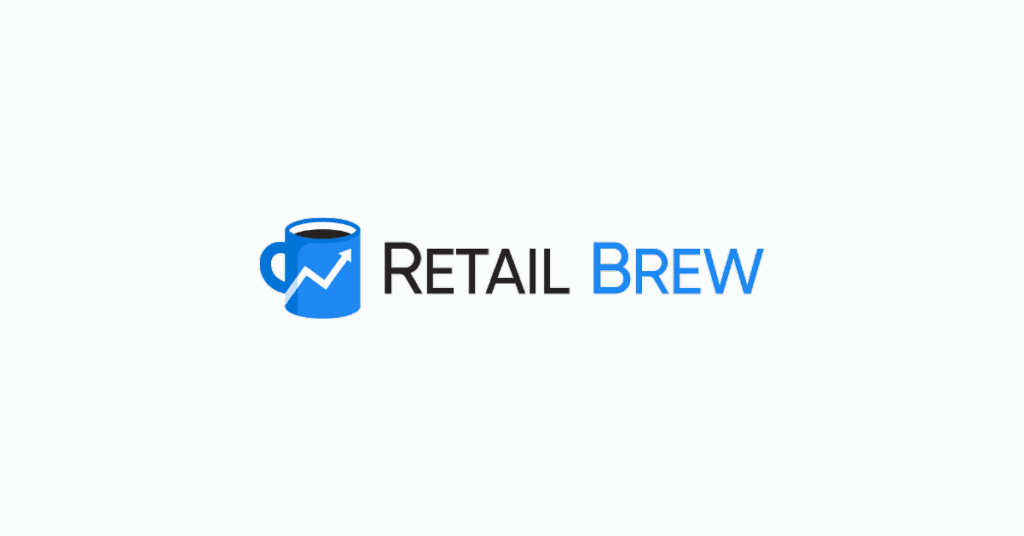
Apr 21, 2021 | newsroom
ShipHero hopes to ride the e-comm wave to close its first-ever funding round, with a $50 million goal, Rubin told Retail Brew. They plan to use the funding to increase staff, acquire more warehouse space, and expand into last mile delivery.










